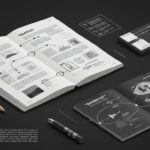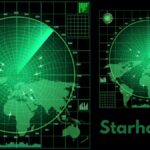In an age where artificial intelligence seems to siphon creativity from the ether and transmute it into pixels, code, and even emotion, a new frontier has quietly emerged: text to VDB AI. It’s the digital alchemy that promises to convert simple prose into volumetric data—VDBs—that underpin next-generation graphics, immersive experiences, and complex simulations. From Hollywood studios seeking more lifelike fire and smoke, to architects rendering sprawling cityscapes in real time, the marriage of language and volumetric databases is poised to redefine how we visualize—and interact with—the digital world.
1. From Words to Volume: A Primer on Text to VDB AI
At its core, text to VDB AI is an entirely new paradigm: natural language doesn’t just instruct an algorithm to place a 3D asset or apply a filter. Instead, AI parses your narrative—“A plume of emerald smoke unfurling in slow motion, tendrils dancing against a moonlit sky”—and materializes it as a volumetric dataset. VDB, short for “volumetric database,” is the file format championed by DreamWorks, Pixar, and countless VFX studios. It encodes information about density, temperature, velocity, and more, layer by layer, voxel by voxel.
The leap from text to VDB data isn’t trivial. Conventional pipelines demand heavy artistic labor: modelers sculpt assets, FX artists choreograph motion, and technical directors craft procedural rigs. Text to VDB AI shortcuts much of this process. By leveraging large language models (LLMs) trained jointly on linguistic and volumetric data, it conjures 3D phenomena directly. This convergence of generative AI and the OpenVDB ecosystem promises to streamline workflows, democratize complex simulations, and unlock a bounty of creative possibilities.
2. The Technology Stack Under the Hood
To appreciate the audacity of text to VDB AI, we must peer under its hood:
-
Multimodal Foundation Models
-
LLMs paired with volumetric autoencoders.
-
Trained on paired text-VDB datasets: scripts and corresponding 3D simulations (e.g., cinematic fire, clouds, fluids).
-
Fine-tuned with reinforcement learning to optimize for coherence, physical plausibility, and artistic flair.
-
-
Text Encoder & Semantic Parser
-
Ingests prompts with granular descriptors: adjectives (smoldering, incandescent), verbs (billowing, swirling), colors, speeds.
-
Maps language tokens to latent vectors aligned with volumetric features (density gradients, vector fields).
-
-
VDB Generator Network
-
A diffusion-like model that “hallucinates” voxel grids.
-
Balances fidelity (high resolution) with efficiency (sparse representations).
-
Employs multi-resolution refinement: coarse “blocky” volumes evolve into crisp detail.
-
-
Physical Consistency Module
-
Ensures fluid, smoke, and fire obey Navier–Stokes equations in approximation.
-
Applies learned priors on how real-world phenomena behave: hot air rises, fire flickers, smoke dissipates.
-
-
Renderer Integration Layer
-
Exports to standard OpenVDB files.
-
Easily plugs into industry-leading renderers (Houdini, Blender, Maya, Katana).
-
Real-time preview via GPU-accelerated ray marching for instant feedback.
-
Rather than laboriously crafting a pyroclastic flow or dancing sparks by hand, artists can now type a line of text and watch the AI sculpt a volumetric wonderland.
3. Real-World Applications: Game Changers Across Industries
The true power of text to VDB AI is its versatility. From blockbuster films to medical imaging, its reach extends far beyond entertainment.
3.1 Film & Visual Effects
-
Rapid Concept Iterations: Directors and VFX supervisors can prototype shots in minutes. “Show me a volcanic eruption at dawn” yields ready-to-light simulations.
-
Cost Efficiency: Reduces reliance on massive render farms. Early-stage proof-of-concept volumes are lightweight, lowering compute costs.
-
Creative Collaboration: Writers and artists collaborate more fluidly. Storyboards evolve into volumetric animatics—no code required.
3.2 Gaming & Real-Time Experiences
-
Dynamic Assets on Demand: Sandbox games could feature procedurally generated volumetric elements—fog rolling in or torches igniting based on narrative triggers.
-
AR/VR Immersion: Augmented reality apps overlay volumetric fireflies, digital smoke trails, or interactive volumetric UIs, all summoned by textual commands.
-
Adaptive Storytelling: Game narratives adapt in real time. Describe a plot twist, and the environment responds—ash clouds, electrical storms, or mystical auras blossom mid-play.
3.3 Architecture & Urban Planning
-
Environmental Simulations: Architects type “morning mist engulfing the courtyard,” visualizing how seasonal fog might affect a plaza.
-
Disaster Preparedness: Textual scenarios—“wildfire smoke drifting toward the suburban neighborhood”—generate volumetric hazard maps for planners and first responders.
-
Client Presentations: Stakeholders draft narrative visions; AI materializes lifelike volumetric contexts around proposed buildings.
3.4 Science & Medicine
-
Medical Imaging Enhancement: Radiologists could annotate reports—“highlight tumor density variation”—and AI generates 3D volumetric overlays to support diagnoses.
-
Climate Modeling: Researchers describe atmospheric scenarios; AI produces volumetric datasets representing pollutant dispersal or cloud formation.
-
Educational Simulations: Biology students type “blood cells flowing through a capillary network” to visualize hemodynamics in 3D.
4. The Creative Edge: Empowering Non-Technical Visionaries
One of the most transformative promises of text to VDB AI is democratization. Historically, volumetric FX and simulations were the province of specialized artists wielding deep technical know-how. Now, a writer, a director, or an indie game developer can coax voxel clouds from prose alone.
-
Speed of Thought to Volume: The frictionless leap from imagination to simulation accelerates creative cycles. No more weeks lost to tuning fluid solvers.
-
Reduced Technical Debt: Teams no longer need bespoke Python or VEX scripts for every shot. The AI handles procedural complexity under the hood.
-
Iterative Freedom: “Let’s see a denser smoke,” “Make it jade green”—revisions happen in seconds, not hours.
Beyond cost savings, this liberation reshapes creative hierarchies. Directors sketch scenes in text, artists refine volumetric textures and lighting. The workflow becomes more inclusive: concept artists, writers, and even marketers can generate volumetric prototypes without diving into node trees.
5. Challenges on the Horizon: When AI Meets Physics
Despite its allure, text to VDB AI grapples with hurdles:
5.1 Physical Realism vs. Artistic License
-
Trade-offs: Highly stylized volumetric clouds may “feel” right, but AI might compromise physical fidelity. Conversely, strict adherence to fluid dynamics can stifle creative exaggeration.
-
Tuning Knobs: Future tools will need intuitive controls for “Artistic Accuracy”—a slider between realism and stylization.
5.2 Dataset Limitations
-
Biased Training Data: Current models often learn from cinematic archives—Hollywood fire, smoky dystopian landscapes. They might underperform on more subtle phenomena (e.g., underwater turbidity).
-
Diversity: Expanding training sets with scientific simulations, environmental scans, and cross-cultural visual references is crucial.
5.3 Computational Bottlenecks
-
Resolution Constraints: Generating high-res VDB files (512³ or greater) demands GPU memory and processing time.
-
Sparse Representations: Advances in sparse convolutional networks help but aren’t a panacea. Efficient hardware and optimized algorithms remain critical.
5.4 Semantic Ambiguity
-
Language Nuance: “Thick smoke” vs. “dense haze” vs. “opaque fog”—minor linguistic shifts can yield dramatically different volumes.
-
User Interfaces: Natural language interfaces must guide users toward unambiguous prompts, perhaps with autocomplete suggestions or preset “Volumetric Styles.”
6. Building Your First Text to VDB AI Pipeline
For studios and tinkerers ready to dip their toes, here’s an outline of a minimal text to VDB AI pipeline:
-
Select a Foundation Model
-
Choose an open-source LLM pre-trained on paired text–volume datasets (e.g., VoluGen, VoxelGPT).
-
-
Prepare a Prompting Interface
-
Web-based form or command-line tool where users type prompts.
-
Real-time token feedback and suggested modifiers for volumetric traits.
-
-
Run the Generation
-
Invoke the text encoder, semantic parser, and diffusion-based VDB generator.
-
Monitor generation progress via low-res previews.
-
-
Refinement & Post-Processing
-
Apply denoising filters, smoothing operations, or custom shaders.
-
Integrate with Houdini or Blender via Python APIs for further artistic tweaks.
-
-
Export & Render
-
Save to OpenVDB format.
-
Render frames with GPU-accelerated engines (Arnold, Redshift, Cycles).
-
This pipeline doesn’t require reinventing the wheel—open-source tools and modular APIs let you assemble a working demo in weeks rather than months.
7. Case Study: Indie Studio Ignites a Siege Scene
Consider EmberForge, an indie game studio crafting a medieval siege simulator. They faced a dilemma: convincing volumetric fire and smoke would require both technical expertise and a hefty budget. Enter text to VDB AI:
-
Initial Prompt: “Roaring siege fire burning wooden palisades at dusk, embers drifting upward.”
-
First Pass: The AI delivered a 256³ VDB file—good density, but the flames appeared too calm.
-
Refinement: A follow-up prompt added “flickering violently” and “sparks exploding outward,” producing a more chaotic spectacle.
-
Optimization: EmberForge downsampled volumes for real-time use, baked velocity fields for particle effects, and layered in hand-painted textures.
Result? A dynamic siege scene that runs smoothly on mid-range GPUs, with no bespoke fluid simulations or VEX coding. Player immersion soared, and EmberForge credits text to VDB AI with shaving two months off their production schedule.
8. The Future: Beyond Volumes, Toward Worlds
Text to VDB AI is only the beginning. As models expand, we’ll see:
-
Text to Full Environments: from volumetric clouds to entire voxel-based landscapes—rocky cliffs, rivers, forests—rendered as VDBs.
-
Interactive Narratives: imagine typing a story segment, and your VR environment evolves in real time—thunderclouds rolling in, bioluminescent fungi pulsing at your character’s footsteps.
-
Cross-Modal Fusion: integrating audio cues (“a thunderclap”) to influence volumetric density and motion, creating synesthetic experiences.
Moreover, federated learning across studios and research institutions will diversify training data, infusing text to VDB AI with global perspectives on weather patterns, cultural imagery, and artistic sensibilities.
9. Ethos and Responsibility: The Art of Prompting
With great power comes great responsibility. As creatives wield text to VDB AI, they must cultivate an ethos:
-
Credit and Attribution: source data often comes from community-shared simulations. Properly credit open datasets and honor licenses.
-
Mitigating Misuse: volumetric reconstructions of real disasters or violent events could be misused. Developers should build guardrails and watermark generative VDB content.
-
Promoting Accessibility: democratization means open-source tools, clear documentation, and community-driven forums where novices can learn best practices.
The future of digital volume lies not just in the code, but in the culture we foster around it.
10. Conclusion: A Volumetric Renaissance
We stand at the cusp of a volumetric renaissance. Text to VDB AI transforms narrative into tangible, interactive volume—no longer confined to the realm of pipe-and-node networks, but accessible through the simple act of writing. As the technology matures, it will reshape film, gaming, architecture, and science, lowering barriers and accelerating innovation.
In the grand tapestry of generative AI, where images sprout from words and music blooms from data, volumetric creation was the missing thread. Now, through text to VDB AI, that thread is woven into the fabric of imagination itself. Whether you’re a blockbuster director, an indie developer, or a curious tinker spilling words into a prompt, the power to sculpt volumes with language is at your fingertips.
Welcome to the future—where words take shape, density, and motion, and every sentence is a blueprint for volumetric wonder.






